Interview with Mireia Massagué
"Only Tàpies could be the first artist to engage in a dialogue with Chillida's work in the Zabalaga farmhouse"
August 2021. Reading time: 8 minutes
Chillida Leku is hosting the exhibition Tàpies in Zabalaga, sponsored by the Iberdrola Foundation, until 10th January. An exhibition in which the work of the Catalan artist engages in a dialogue with that of Chillida, with whom, in addition to being good friends, he was united by the desire to transcend matter as a path towards spirituality and a humanist approach with which he underlined the transforming capacity of art. Mireia Massagué, director of Chillida Leku, invites us to enjoy the bond between two unique and inimitable artists at the Zabalaga farmhouse.
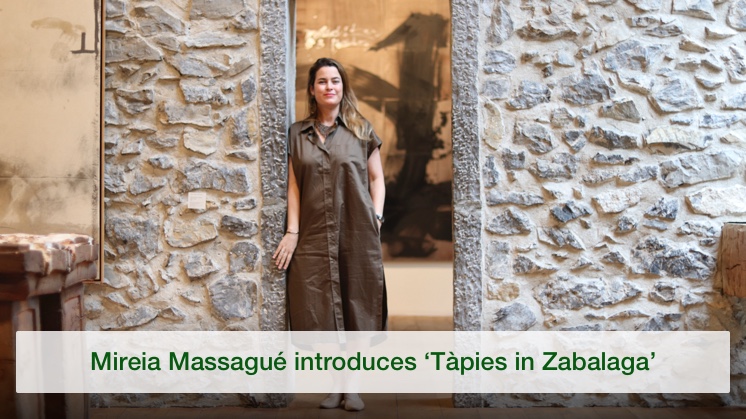
Mireia Massagué, director of Chillida Leku, poses inside the Zabalaga farmhouse (spanish version).
Chillida Leku is starting up a new series of exhibitions focusing on guest artists whose works are in dialogue with those of Eduardo Chillida. How did the idea come about and why?
Since we reopened the museum in April 2019, our aim has been to make room for other artists. This is a great challenge, but we are convinced that it is an unbeatable way of giving visitors a new perspective on Chillida's work and his artistic career. Eye Benches III, by Louise Bourgeois, was the first guest work we had at the museum and hosting a guest artist's exhibition was a natural progression.
The first guest artist is none other than Antoni Tàpies, so why start with the Catalan artist?
It couldn't have been anyone else. We brought the exhibition about with the certainty that only Tàpies could be the first artist to enter into dialogue with Chillida's work in the Zabalaga farmhouse. And this is for many reasons. Not only because of the innumerable times they coincided, at the Venice Biennale in 1958, at Europalia in 1986, at the Maeght gallery or in the workshops of Saint Paul de Vence, but also because both travelled the same paths, although they did so in different ways. When I visit the exhibition, now it has been installed, that initial certainty is reinforced in me and I am convinced that everyone who visits it will share that same feeling.
"Opening up Chillida Leku to other artists is an an unbeatable way of providing a new perspective on Chillida's work and his artistic career"
Tàpies in Zabalaga is the title of the exhibition, what can we find in it and what aspects would you highlight?
Tàpies in Zabalaga External link, opens in new window. is a tribute to the exceptional Catalan artist Antoni Tàpies (1923 - 2012), whose work, like that of the Basque sculptor, left a profound mark on modern and contemporary art. The exhibition is displayed on the upper floor of the Zabalaga farmhouse and can be visited until 10 January 2022. It is made up of a selection of small and large format works, mainly sculptures, dated between the 1980s and 1990s. This allows the pieces to establish a direct dialogue with the works by Chillida on display on the ground floor, as well as with the Zabalaga farmhouse itself, a space that was restored by the artist from San Sebastian.
External link, opens in new window. is a tribute to the exceptional Catalan artist Antoni Tàpies (1923 - 2012), whose work, like that of the Basque sculptor, left a profound mark on modern and contemporary art. The exhibition is displayed on the upper floor of the Zabalaga farmhouse and can be visited until 10 January 2022. It is made up of a selection of small and large format works, mainly sculptures, dated between the 1980s and 1990s. This allows the pieces to establish a direct dialogue with the works by Chillida on display on the ground floor, as well as with the Zabalaga farmhouse itself, a space that was restored by the artist from San Sebastian.
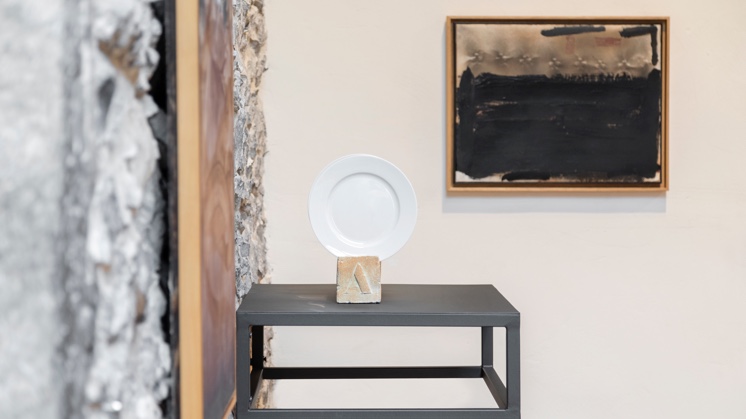
Tapies in Zabalaga.
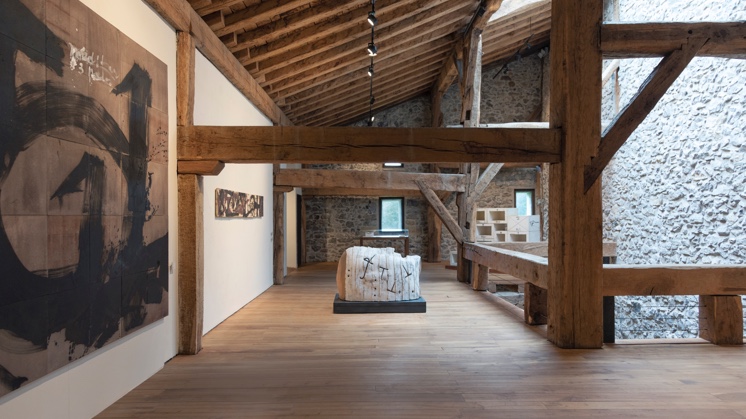
Images of the exhibition 'Tàpies in Zabalaga'.

Images of the exhibition 'Tàpies in Zabalaga'.
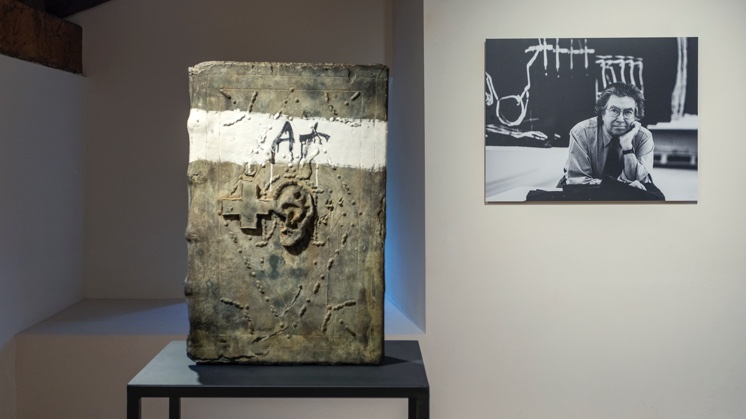
Images of the exhibition 'Tàpies in Zabalaga'.
Tàpies and Chillida left a deep impression on contemporary art, what unites these two contemporary artists?
If there is one thing that unites Tàpies and Chillida above all else, it is the respect they felt for matter, which they treated in very different ways but always as something living, transcending it, bringing together in it the philosophical, vital and spiritual principles that moved them both. Their relationship is consolidated, as well as in their dealings with matter and their desire to transcend it as a path towards spirituality, in the presence of philosophy and poetry in their works and in their interest in Eastern spiritualism. All this crystallised in a humanist approach to artistic work, with which both artists emphasised the transformative capacity of art. Undoubtedly, their strong character and their own individual style make them unique.
What is the dialogue between Tàpies and Chillida in the exhibition and what role does the chamotte clay play?
The material from which most of the sculptures in the exhibition are made is chamotte clay, which acts as a meeting point between the two. It was in 1981 that Tàpies began to experiment with the possibilities of this technique in the studio of the ceramist Hans Spinner. At that time, the Catalan artist received several invitations to go and work with ceramics at the workshop of the gallery owner Aimé Maeght in Saint Paul de Vence (France). Chillida, who had discovered this material in the same kilns, then urged Tàpies to accept the invitation and to work with chamotte clay. It was then that he began his production of fired clay.
"If there is one thing that unites Tàpies and Chillida, it is the respect they felt for the material, which they treated very differently but always as something living"
Leaving aside their artistic relationship, what was the personal relationship between the two artists like?
The relationship between the two artists was very good, they were great friends and had the opportunity to meet and share prizes and exhibitions, such as Europalia in 1985, together with another great artist and friend, Antonio López. In the exhibition we can find archival documents that show this relationship: photographs taken together, dedicated books and manuscripts.
What does the setting, the Zabalaga farmhouse - the place that houses Chillida Leku, contribute to the exhibition?
The Zabalaga farmhouse is another of Chillida's works. In it, the work of these artists not only engages in dialogue with each other, but also with the farmhouse itself. The link between the work of the two artists is almost palpable, as if we were witnessing one of the many conversations they had during their lifetime. Moreover, we hope that Tàpies' work will find itself in this space as in his beloved and deeply missed Montseny, in constant harmony with nature, seeking a balance between the earthly and the spiritual.
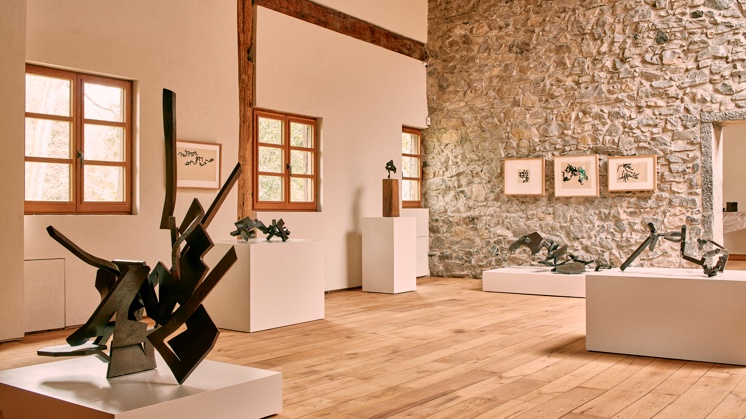
Images of the interior and exterior of Chillida Leku.
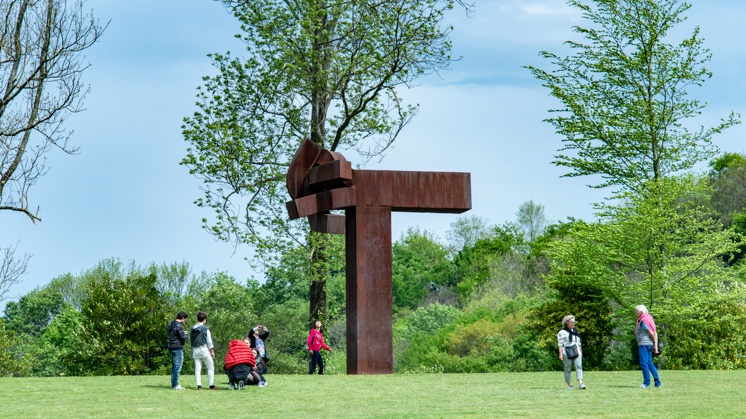
Images of the interior and exterior of Chillida Leku.

Images of the interior and exterior of Chillida Leku.
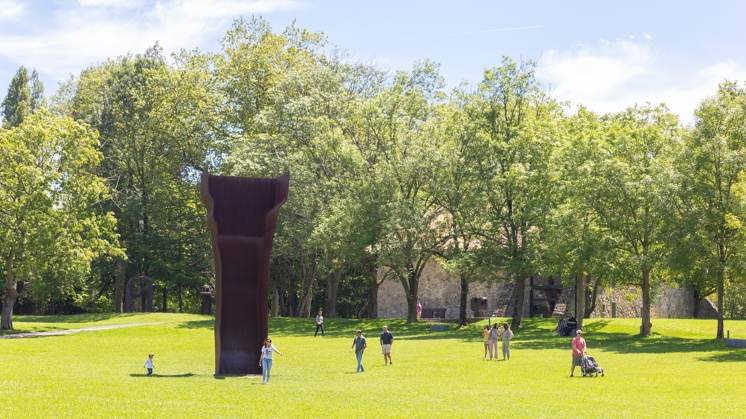
Images of the interior and exterior of Chillida Leku.
The Iberdrola collection has loaned two works, Ocho cruces (Eight crosses, 1981) and Huellas de hoja (Leaf prints, 1982), could you introduce them for us?
In addition to the sculptures, the exhibition offers an approach to pictorial works that connect with material paintings. The painting Ocho cruces (1981) brings together various themes present in Tàpies' work External link, opens in new window.. On the one hand, the importance of textures, irregularities, roughness - Tàpies was interested in the marks left by the passage of time, wounds and scratches. On the other, the presence of the crosses, the symbol most frequently used by the artist. In Huellas de hoja, (1982) the theme of the trace appears once again, which is present through the absence of the object itself. In this case we see, on the one hand, the footprint of a boot or shoe and, on the other, the relationship with nature through the footprints left by leaves.
External link, opens in new window.. On the one hand, the importance of textures, irregularities, roughness - Tàpies was interested in the marks left by the passage of time, wounds and scratches. On the other, the presence of the crosses, the symbol most frequently used by the artist. In Huellas de hoja, (1982) the theme of the trace appears once again, which is present through the absence of the object itself. In this case we see, on the one hand, the footprint of a boot or shoe and, on the other, the relationship with nature through the footprints left by leaves.
"The summer of 2021 has been particularly active, demonstrating that culture is safe and necessary for well-being"
How has Chillida Leku evolved from its beginnings to what it is today?
On 16th September 2000, the Chillida Leku Museum officially opened its doors to the public - the interior of the old Zabalaga farmhouse was refurbished by the artist himself in a very personal way - and from the very beginning it became a living museum, focused on the study and dissemination of Chillida's work. The sculptures have been in dialogue with dance and poetry, reaffirming itself as a meeting place and support for creation, a space for dialogue between the arts. A new phase began in 2019 with its reopening thanks to the support of the Hauser & Wirth gallery. The garden and the farmhouse retained their character and essence, but the museum was adapted to the needs of the 21st century public and, today, a garden designed by the Dutch landscape designer Piet Oudolf welcomes visitors. Despite the crisis brought on by COVID-19, which forced the museum to close for a few months, it has restarted its activity in earnest. The summer of 2021 has been particularly active: yoga among the sculptures, live music, open-air cinema and family workshops are some of the projects that have been successfully carried out, demonstrating that culture is safe and necessary for well-being.
What other guest artists will we be able to see in the near future? If you can't tell us anything in advance, can you tell us about the criteria used to choose them?
From its monographic nature, Chillida Leku seeks to establish an enriching dialogue with contemporary artists and those of the sculptor's contemporaries through a high-quality interdisciplinary exhibition, educational and cultural programme aimed at a wide and plural audience.
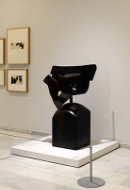
Javier González de Durana
"Oteiza and Chillida were two titans of art".
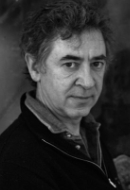
Darío Urzay
"Art will always be there because we artists can always create".
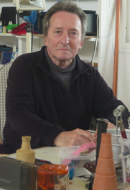
José Manuel Broto
"Artists are used to working when times are hard".
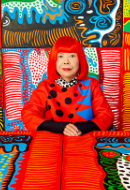
Lucía Agirre
"Through art, Yayoi Kusama has sought her own healing and that of all humanity".




